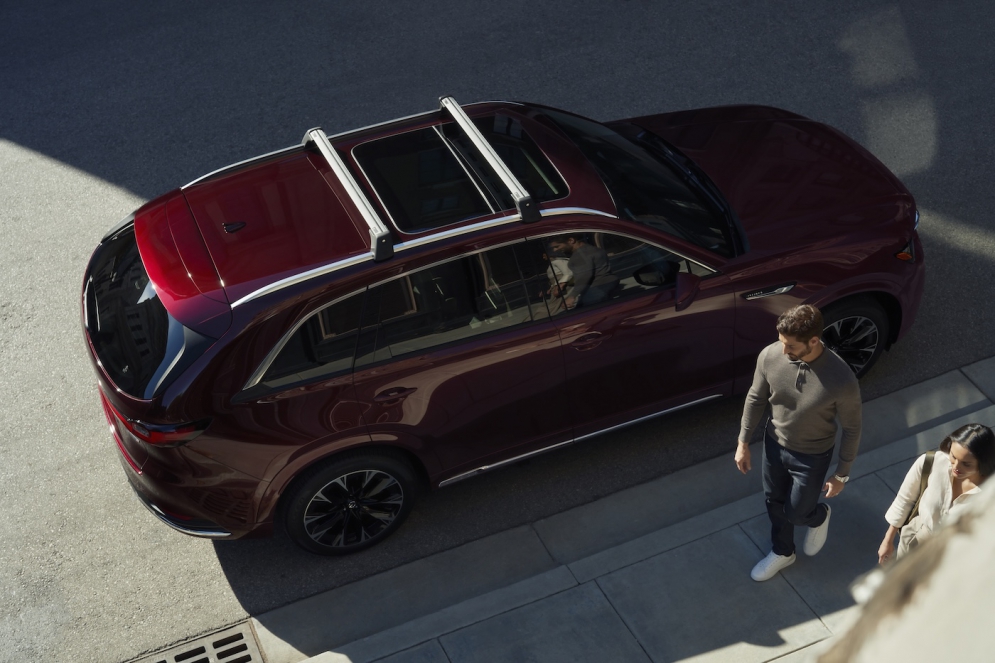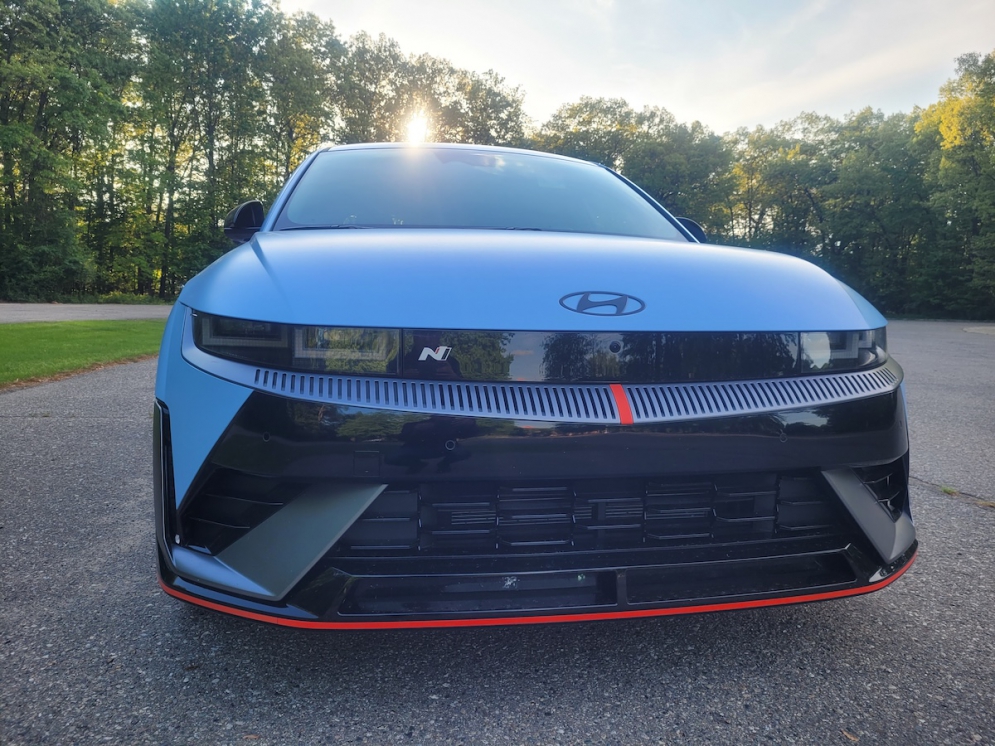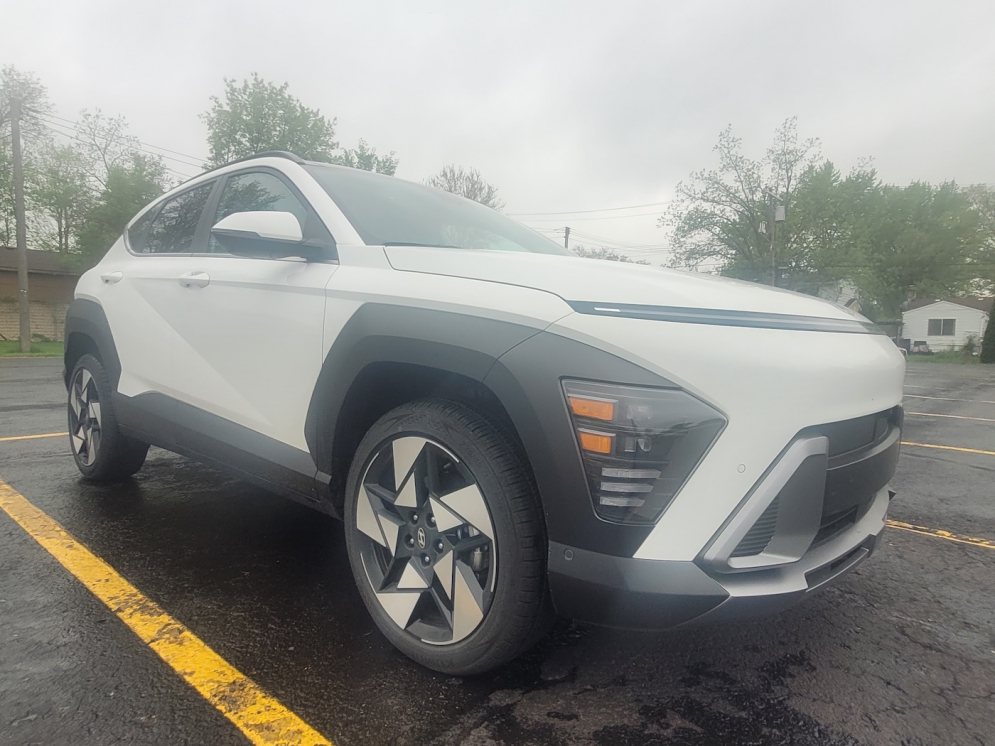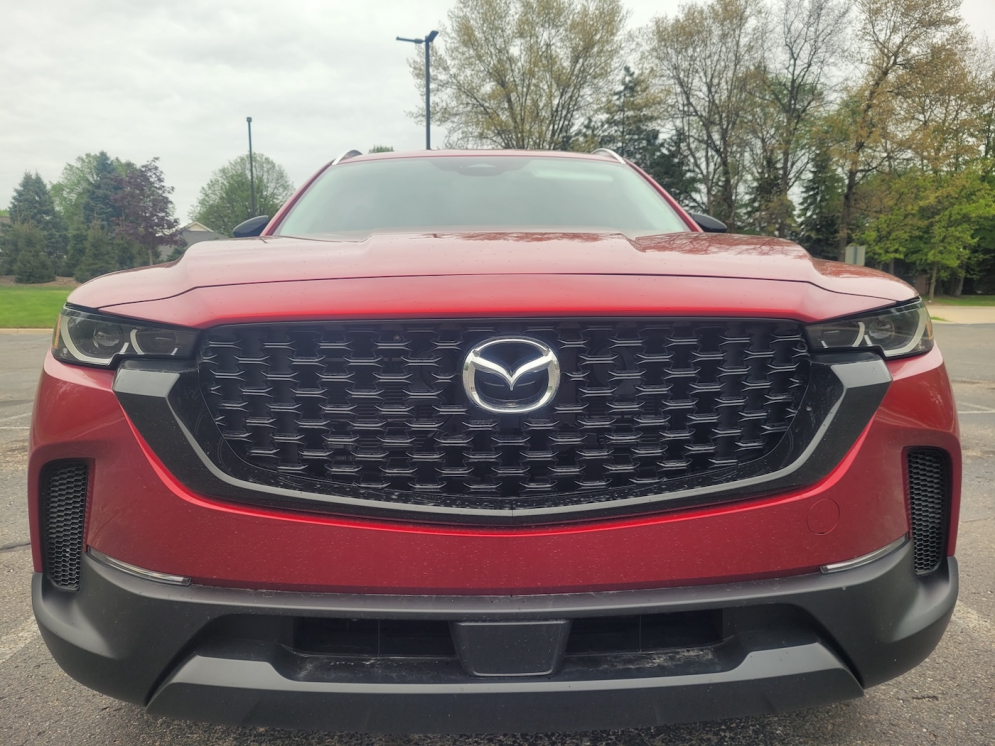The top of the vehicle lineup from Mazda got a strong boost in 2024 with the outgoing three-row CX-9 model receiving a strong upgrade to the new three-row offering called the CX-90.
Beyond adding a zero to the name, the CX-90 was improved in just about every way, from looks to performance to tech — and after a strong debut, the CX-90 is back for year two in 2025, with few changes other than some trim level and feature shakeups.
I recently tested the 2025 CX-90 (a top-trim S Premium Plus trim-level model), which delivers one of the best driving experiences of any three-row SUV currently available.
Read on to learn how the CX-90 compares to three-row SUV rivals from competitors such as Kia (Telluride), Hyundai (Palisade), Honda (Pilot), Toyota (Grand Highlander), Ford (Explorer) and more.
Additional Info
- Vehicle 2025 Mazda CX-90
- Price as tested $58,500 (starts around $39K)
- Best feature Powerful engine, upscale design approaches luxury level
- Rating 4.5 out of five stars
- Who will want this vehicle? Three-row SUV buyers looking for a classy and fun driving experience
While the regular version of the Hyundai Ioniq 5 is a solid offering, the brand was smart to realize that driving aficionados are always looking for that little bit extra, and the ultra-powerful 2025 Hyundai Ioniq 5 N was born.
New for the 2025 model year, this all-wheel-drive electric SUV from Hyundai has the numbers to challenge everything in its class, and some contenders in classes above, and is focused purely on performance.
I recently spent some time behind the wheel of an Ioniq 5 N — with its 641 horsepower and racecar-worthy setup — and I’m back with with a full report.
Additional Info
- Vehicle 2025 Hyundai Ioniq 5 N
- Price as tested $68,685
- Best feature Extreme speed and power, sporty and fun to drive; sharp racecar-style design
- Rating 4.5 out of five stars
- Who will want this vehicle? EV buyers who want a track-capable SUV with a ton of pizzazz and power
When it comes to SUVs, Hyundai is one brand with a stacked lineup that has all sizes covered — from those wanting a large three-row option all the way down to subcompact offerings.
One of the smaller and more affordable options from Hyundai (just one step up from the even smaller Hyundai Venue, but below the Hyundai Tucson) is the 2025 Hyundai Kona, a vehicle I recently had the chance to experience.
This funky looking but fun to drive commuter-friendly ride is among the better options for people looking for something on the smaller side, but isn’t underpowered. It received minor updates in 2025 after a fully updated version debuted in 2024.
There are plenty of rivals to consider — including the Chevy Trax and Mazda CX-30 to the Volkswagen Taos — but the Kona holds its own against them, especially on the performance end of things.
Additional Info
- Vehicle 2025 Hyundai Kona
- Price as tested $35,005 (starts around $25K)
- Best feature Fun to drive, upscale interior, strong tech features
- Rating 4 out of five stars
- Who will want this vehicle? Compact SUV buyers seeking high-quality interior, strong tech
Many automakers have resisted the move to include hybrid models in their lineup, preferring to stick to pure ICE offerings.
Mazda is one such company, which prior to 2025 only offered two hybrids that were both plug-in models. They have now added a traditional hybrid to the lineup, that being the 2025 Mazda CX-50 hybrid.
I recently spent some time behind the wheel of a Premium Plus trim CX-50 hybrid, and I found this compact hybrid SUV loses little of the driving enjoyment the standard CX-50 offers, while adding significant fuel mileage gains and keeping its upscale interior.
Read on to learn more about how it stacks up in a segment full of solid hybrid offerings — including the Honda CR-V hybrid, Toyota RAV4 hybrid, Hyundai Tucson hybrid, and more.
Additional Info
- Vehicle 2025 Mazda CX-50 hybrid
- Price as tested $42,065 (starts around $34K)
- Best feature Fuel economy, Mazda drive quality
- Rating 4 out of five stars
- Who will want this vehicle? Mazda fans who want the vehicle’s looks and driving style, but want extra fuel economy
Bubba Wallace, Chris Buescher, other bubble drivers can’t rely on points to make 2025 playoffs Featured
While the race at Pocono on Sunday was largely a snoozefest and left much to be desired (though to its credit, a lot of folks likely enjoyed a nice nap), there is plenty to talk about in the aftermath of Chase Briscoe’s first win for Joe Gibbs Racing in the 19 car.
Top of mind is the increasingly small number of playoff spots that remain open, and whether or not any drivers will be able to make the playoffs through points alone.
At this moment, there are 11 drivers who have won a race, and should make the playoffs barring extreme circumstances. But there are 9 races left until the playoffs start, including drafting tracks at Atlanta and Daytona, plus the Chicago street course, and road courses at Sonoma and Watkins Glen. All five of those are wild cards, and unique and unexpected winners could emerge.
While I don’t think we’ll have more than 16 winners when the checkered flag falls at Daytona and the playoff lineup is set, anything is possible. So the following drivers need to realize their postseason is in danger if they don’t get a win:
Bubba Wallace: After a recent run of decent finishes, Bubba was snakebit at Pocono — not even making a qualifying run due to technical difficulties, then hitting the wall hard after brake failure during the race. He is now hanging by a thread and ranked 15th in the playoff grid, but that could easily evaporate if his bad luck continues. Bubba’s best chance to win his way into the playoffs is either next week at Atlanta, or at Daytona, and he’ll need to hold his own at the road courses to make sure he doesn’t drop major points there. This nine-week stretch will be a serious test for the 23 team.

AutoTechReviews is your home for In-depth reviews of the latest cars, trucks, and SUVs; information on all the emerging vehicle technology; and breaking news from the world of NASCAR and other motorsports.





